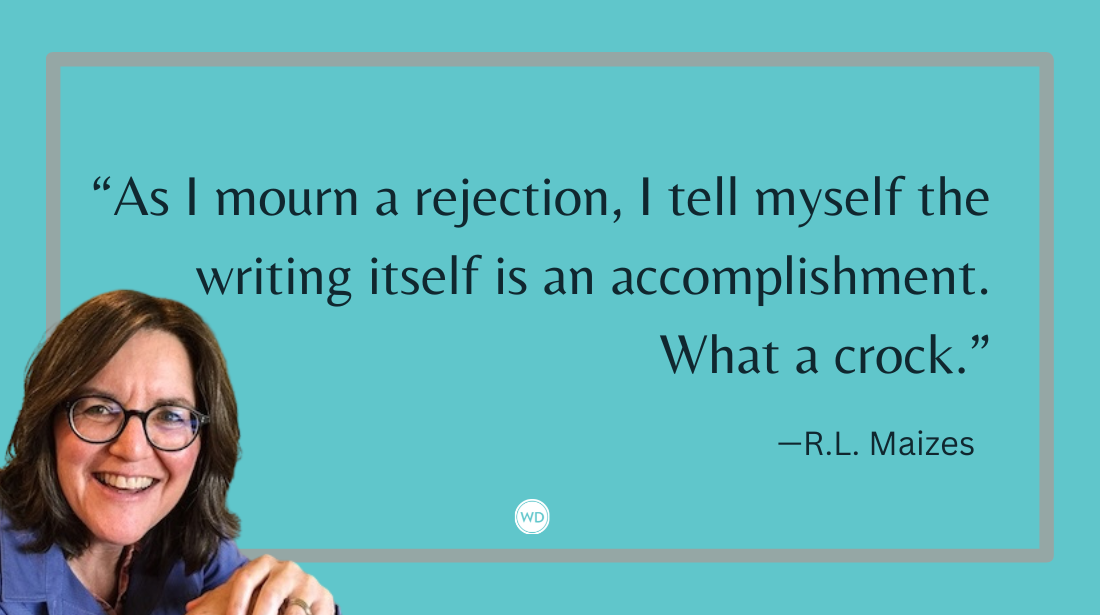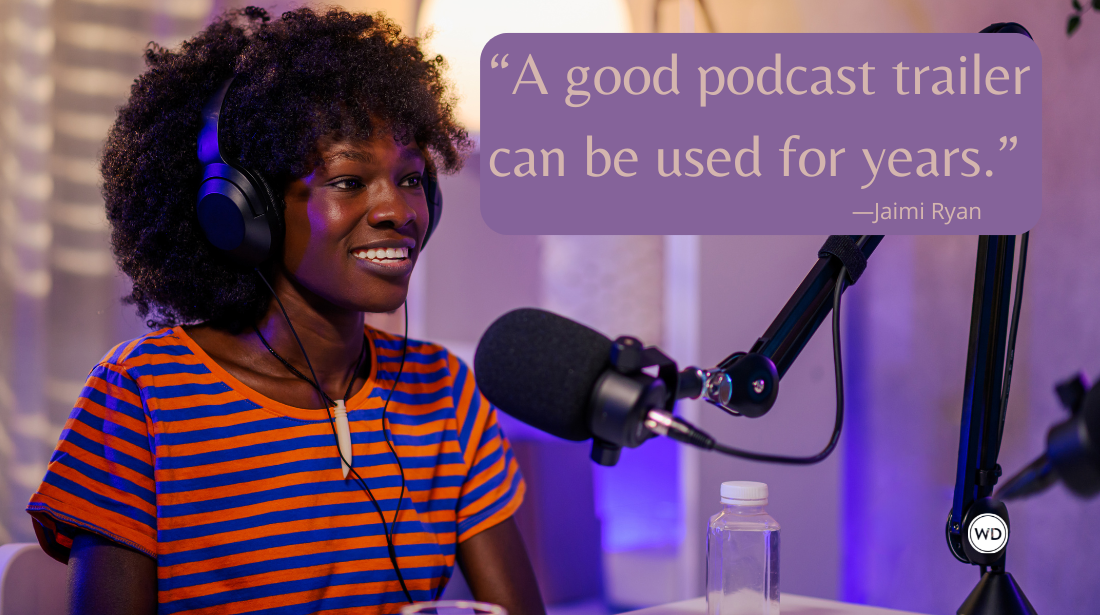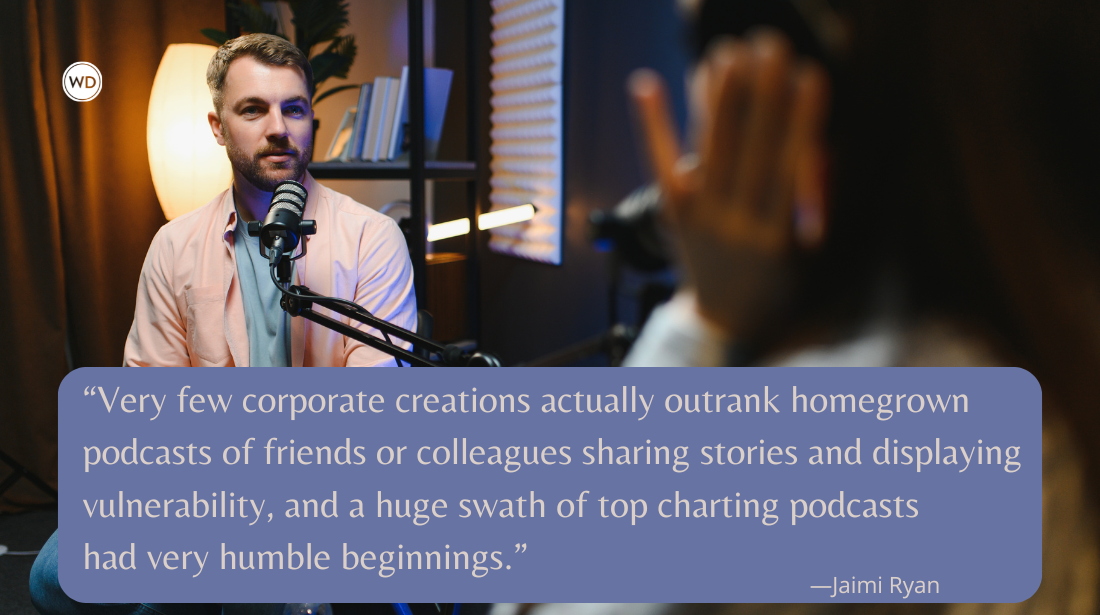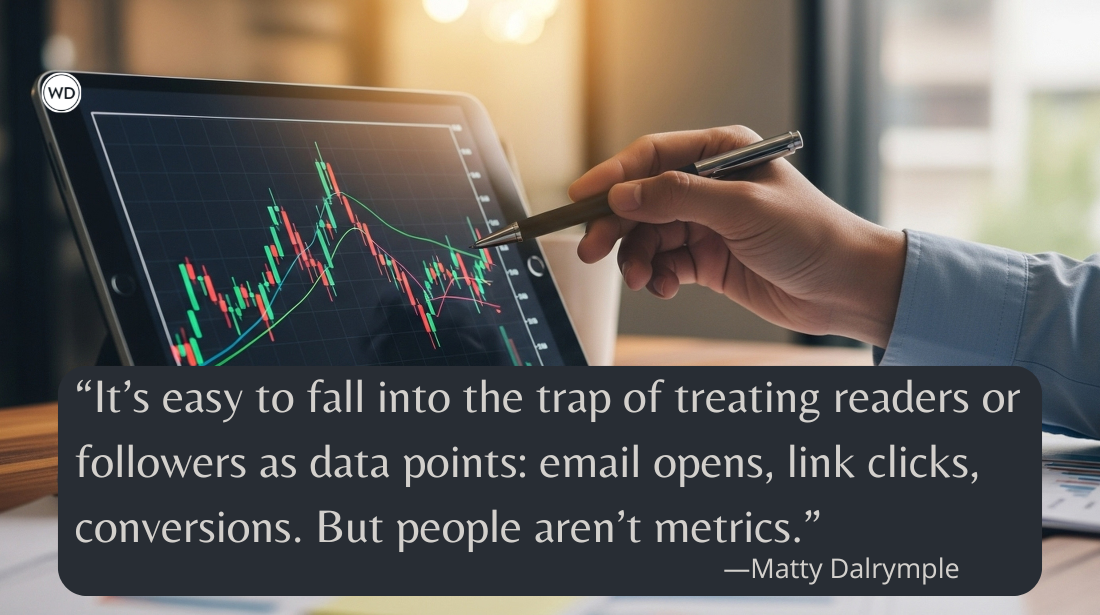A Step-by-Step Guide to Build Your Author Website
Your author website is your online home, and it may be the single most important tool for promoting yourself and your work. Here is a step-by-step guide to build your author website today and build for tomorrow.
An author website is your most critical tool for book promotion and long-term platform development. It should be a 24/7 resource for readers and media—one that you update, own and control—serving as an online hub for everything you do.
If you depend on social networking to take the place of an author website, this is a terrible strategic move. It puts you at the mercy and whims of a third party. You can’t control what Facebook or any other site does—with its design, with your likes/followers, with its functionality. And when it falls out of favor (remember MySpace?), you’ll have to start over again somewhere else.
A good website gets stronger over time, puts you directly in touch with your readers, and is a long-term investment in your author career. Given the new services geared toward people without programming or coding skills, you can start a basic website yourself without any special training. Here’s how to begin that process.
In this 90-minute webinar, Jane Friedman will teach you the principles of strategic blogging for authors and the best practices she’s learned since she started blogging consistently in 2008. She’ll discuss what blogging is (it’s a funny term and its meaning has changed), how to get readers for your blog, and point to the key strategic models used by author-bloggers today.
LAYING THE GROUNDWORK
Before you build your site, you have a few important decisions to make.
Buying a Domain Name
The domain name is the URL or Web address of your site. For example, janefriedman.com is a domain that I pay an annual fee to own. Most authors should buy a domain name that closely adheres to the name they publish under. While you might sometimes buy domain names related to your book titles, we’re most concerned with building an author-branded website that spans your entire career.
If [yourauthorname].com isn’t available, consider .org, .net, or another version; just keep in mind you’ll lose some visits to people ending up at the .com. Consider adding the word “author” or “books” to get the .com, or to find an available domain if your name is common.
You can buy domain names from many providers (GoDaddy.com is one of the most well-known), typically for $10–20/year. If you haven’t yet purchased a domain name, then it can be more economical to buy the domain from the same service you use for hosting your site—which is the next important decision.
Selecting a Host
A host keeps your site up and running 24 hours a day—kind of like someone who keeps the lights on and water running—and can offer support if you experience trouble. Your options fall into three broad categories: free hosting, fee-based hosting (or “self-hosting”), and managed or premium hosting.
Free hosting: If you’ve ever used Blogger or WordPress, then you have experience with a free website hosting service. While these services are typically user-friendly and hassle-free, they have limitations, such as:
- You won’t be able to fully customize your site.
- Functionality will be limited, particularly when it comes to e-commerce or monetization.
- You may not be able to get in-depth analytics about visitors or how people find your site.
For unpublished authors, free hosting often makes the most sense, as you’re still developing your author brand and probably don’t yet need the freedom (and complexity) that comes with a self-hosted site. To be in a position to later transition from free hosting to self-hosting, however, I recommend starting with WordPress to allow for a seamless transfer to a self-hosted WordPress site if and when the time comes (see sidebar on the opposite page).
Fee-based hosting (“self-hosting”): Self-hosting means you have complete control over and access to your website environment, platform and files. Consider self-hosting as analogous to home ownership: You can customize your home and property, but you’re also responsible when something goes wrong.
Self-hosting is best for established authors, writers about to release their first book, or anyone who wants to monetize their site. The advantages of self-hosting include:
- The ability to fully customize your site design—to decide fonts, colors, page templates, headers, footers, etc. This can be critical for long-term author branding.
- Insight into your website traffic and what marketing efforts are working.
- Freedom to add functionality to earn money from your site (e.g., advertising, e-commerce, membership or paywall areas).
- More effective integration of email newsletter sign-up tools.
Some of the most common hosting providers are Bluehost, HostGator and DreamHost; all offer one-click installation of WordPress and 24/7 support, and cost as little as $4–7/month. (Note: It’s generally a bad idea to use a fee-based host’s “instant website” or “overnight website” service. They aren’t long-term solutions.) For a free 10-minute tutorial on how to set up a self-hosted WordPress site, visit http://bit.ly/WDselfhost.
With self-hosting, you become responsible for your own site security; you have to back up your site if your host doesn’t; and if your site should go down, it’s your problem to solve (which usually starts with a call to your host). If that worries you, consider a managed or premium hosting service.
Managed or premium hosting: Many users find that with a bare-bones self-hosting arrangement, you get what you pay for. With managed or premium hosting, you pay a higher price (up to $30/month) for services such as regular backups, site security and superior support. For authors with little technical background or experience—and no time or inclination to get up to speed—managed hosting may be the right answer. One of the most popular managed hosting solutions for WordPress sites is WP Engine.
If managed hosting is too expensive and self-hosting is too scary, then consider one of the following:
- Squarespace, which offers a managed hosting environment and e-commerce functionality. It’s not WordPress-based, but it does allow you to export some content if you ever leave it. A starter plan is $8/month.
- An upgrade at WordPress.com: $99/year will buy additional customization, storage and functionality.
- Hiring someone to help you properly set up your site.
Hiring Help: When & Why?
Two kinds of help are most commonly enlisted (generally through personal referrals or sites such as oDesk) when getting started: a Web designer or a Web programmer. Sometimes these skills can be found in the same person if your needs are fairly straightforward.
Web designers customize the look and feel of your site, including headers, page templates, fonts, colors, etc. When you need your site to reflect your author brand, and that means going beyond cookie-cutter templates, you need a designer. Programmers focus on improving or extending site functionality, speed and security. Both designers and programmers can help you get a website off the ground and put everything in its right place, then offer guidance on how to manage it yourself.
Hiring help can speed the process, reduce frustration and give you peace of mind that things are set up correctly. When it comes to extensive design or functionality customizations, however, you may want to hold off until you’ve had the site in place for at least a few months, so you’ll fully understand what’s working or not, and what needs to change. Web professionals don’t come cheap; expect to spend $500–1,500 for basic setup, depending on the experience and package offered by the freelancer; advanced customization and functionality can easily run $3,000 or more.
BUILDING THE SITE
Writers often give a lot of consideration to home page design, but just as important is what appears on every single page of your website: the header, the sidebars, the footer, pop-ups, etc. These areas include an important “call to action”: What should visitors do when they visit? The answer to this question will change periodically, based on what’s happening in your career. For example:
- Should visitors buy your latest book?
- Should visitors sign up for your email newsletter?
- Should visitors follow you on Facebook?
The answers to these questions should guide you as you design and structure each page.
Choosing a WordPress Theme
Assuming you use WordPress, your first step will be to choose a theme. Your theme establishes the look and feel of your site, and how much you can customize it without having to know code. Take care to choose a theme that fits your aesthetic sensibility and needs, as changing it often requires advanced skills, time and/or money. Here are a few questions to ask before committing to a WordPress theme:
- Are you happy with the page templates it provides? Look at how many columns there are, how many sidebars, header or footer areas, and so on. Good themes often offer several page templates to choose from.
- Are you happy with the fonts, colors and heading styles? These won’t change unless you know how to modify CSS stylesheets.
- Can you customize the header image? This is usually critical.
- Can you customize the home page to your liking? Many themes offer special design options specifically for the home page.
- How flexible is the theme in allowing you to make minor customizations without coding? (Look for theme options or theme customizations.)
Most WordPress themes are free, but you can also buy a premium theme, which will come with better support and forums (meaning you can work out bugs more quickly), more frequent updates and more customization options.
Incorporating the 7 Essential Website Elements
- Clear author name or brand: Some authors also add a tagline or description that clearly describes the type of writing they do. For example, novelist CJ Lyons’ is “Thrillers With Heart.”
- Email newsletter signup: Whether you send it once a year or once a week, start a free email newsletter to stay in touch with readers who visit your site. MailChimp is one email newsletter service (free up to 2,000 names) that helps automate the process for you.
- About or bio page: Some authors put this information right on the home page, as in the case of the example above; even if you do this, create a separate page with a more detailed bio and a professional author photo.
- Information about your books, articles or products: You might have a separate page for each book or product, or you might combine everything onto one page. Regardless, don’t skimp on the details, and always include links to where your work can be read or purchased in both print and digital form.
- Social media icons or badges: Let readers know where else you’re active online.
- Social proof: If you have notable media coverage, good reviews, positive testimonials or a significant following on a specific platform (e.g., Twitter), let it be known. These are important signals to visitors that you’re worth their time and attention.
- Straightforward menu or navigation: Don’t be clever with the names of menu items or pages. Label things clearly. Web design studies have shown that visitors’ eyes tend to glaze over if there are more than 5–7 menu items, so be disciplined about how many you decide to include.
Most people who visit your site will never return, and a majority of visits won’t last more than a minute. So make the tough decisions: If people spend only 10–15 seconds on your site, what should they not leave without knowing? How can you stay connected to readers or fans after they leave?
Maximizing Your Site
If you are actively blogging, you’ll get more traffic to your blog posts than to your home page. Make sure your global website header, sidebar and/or footer appearing on your blog offer your most important calls to action, since many visitors will not go to your home page.
If you are not actively blogging, it’s a bad idea to have blog posts front and center on your home page, which is the default setting of most WordPress themes and sites. Be sure to change this (see illustration at right).
If visitors reach the bottom of a page or post, that typically means they are very engaged. This is a prime opportunity to add a call to action, such as an email newsletter sign-up or a book for sale.
To maximize the effectiveness of your website, install a site analytics tool. Google Analytics is a free and popular tool available to anyone with a Google account. Once you install it, you’ll immediately collect data on your website traffic and visitors, your most popular content, and how people navigate or use the site.
About 20–30 percent of your site traffic will come from mobile or tablet devices. Is your site optimized for those visits? If your site is WordPress-based, it will likely be mobile-friendly from the start, but double-check.
With websites, I believe in the power of incremental progress. You don’t have to launch and perfect everything at once. In fact, doing so is against the grain of the digital era. Start small but smart, and build your skills and presence over time. Customize and add more complex functionality as you get comfortable, and as you develop specific goals that require the investment.
The Wisdom of WordPress
WordPress is a free, open-source content management system that powers more than 20 percent of the world’s websites. While it’s commonly known as a free blogging tool (WordPress.com), it is also used for full-fledged websites, with versions customized by the site owner. (Even The New York Times uses a customized version of WordPress.)
If you build your site using WordPress, you don’t have to pay to use the technology. WordPress is so prevalent across every industry that it helps insulate you from inevitable changes in technology; the core WordPress system is regularly updated. Thousands of freelancers and professionals
have experience programming and designing WordPress-based sites, so there’s a significant community of people available for hire. You’ll also find a diverse range of how-to tutorials, forums, free design themes, and plug-ins to add functionality to your site in seconds. Finally, once set up, you can easily and quickly make site updates, blog posts and other modifications without the intervention of a programmer or designer. You could easily go a year or more without needing help.
While WordPress may not fit every author’s needs, you should have reasons for choosing a different platform for your site. What happens if you need to leave that platform and move to another environment? Can you export your content or design? Will you have to start over from scratch? Are you using tools or technology that may disappear soon? Think long-term and never assume that the solution you choose today will be around in a few years, much less a decade from now.
Free & Easy Ways to Get a Website Up
Need a website in a pinch? Here are a few options.
About.me: This is a free splash-page service that features just the bare minimum: your name, your bio or personal statement, an image (such as your headshot), links to your social media profiles, and contact information. Dead simple. Here’s mine: about.me/janefriedman.
RebelMouse.com: This free tool aggregates all of your social media activity into one continuous stream. You can also create a customized header, add pages or sections, create unique posts and customize the design.
Contently portfolio: This is ideal for freelance writers and journalists. Tell Contently where you publish your stuff, and it will generate a professional-looking splash page with links to your top articles and more. Sign up for free at contently.com/journalists.
Adjusting your Default Homepage
In WordPress, if you don’t want your front page (home page) to display blog posts by default, then you need to designate a different page as your front page in your site’s settings. Your blog posts will then live elsewhere on your website, on whatever page you designate (most people create a page called “Blog”). You can also eliminate the blog entirely from your website by choosing “Select” to nullify it, as shown here.
Jane Friedman is a full-time entrepreneur (since 2014) and has 20 years of experience in the publishing industry. She is the co-founder of The Hot Sheet, the essential publishing industry newsletter for authors, and is the former publisher of Writer’s Digest. In addition to being a columnist with Publishers Weekly and a professor with The Great Courses, Jane maintains an award-winning blog for writers at JaneFriedman.com. Jane’s newest book is The Business of Being a Writer (University of Chicago Press, 2018).









